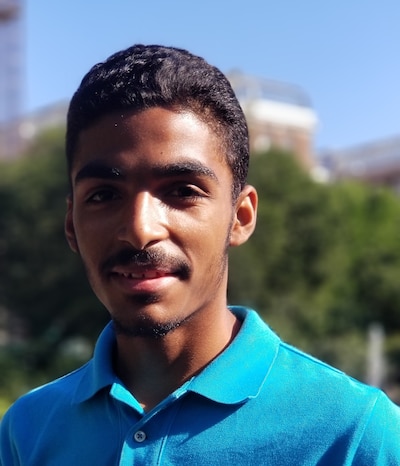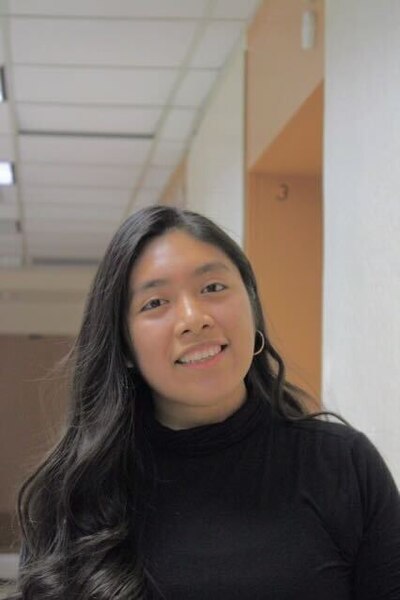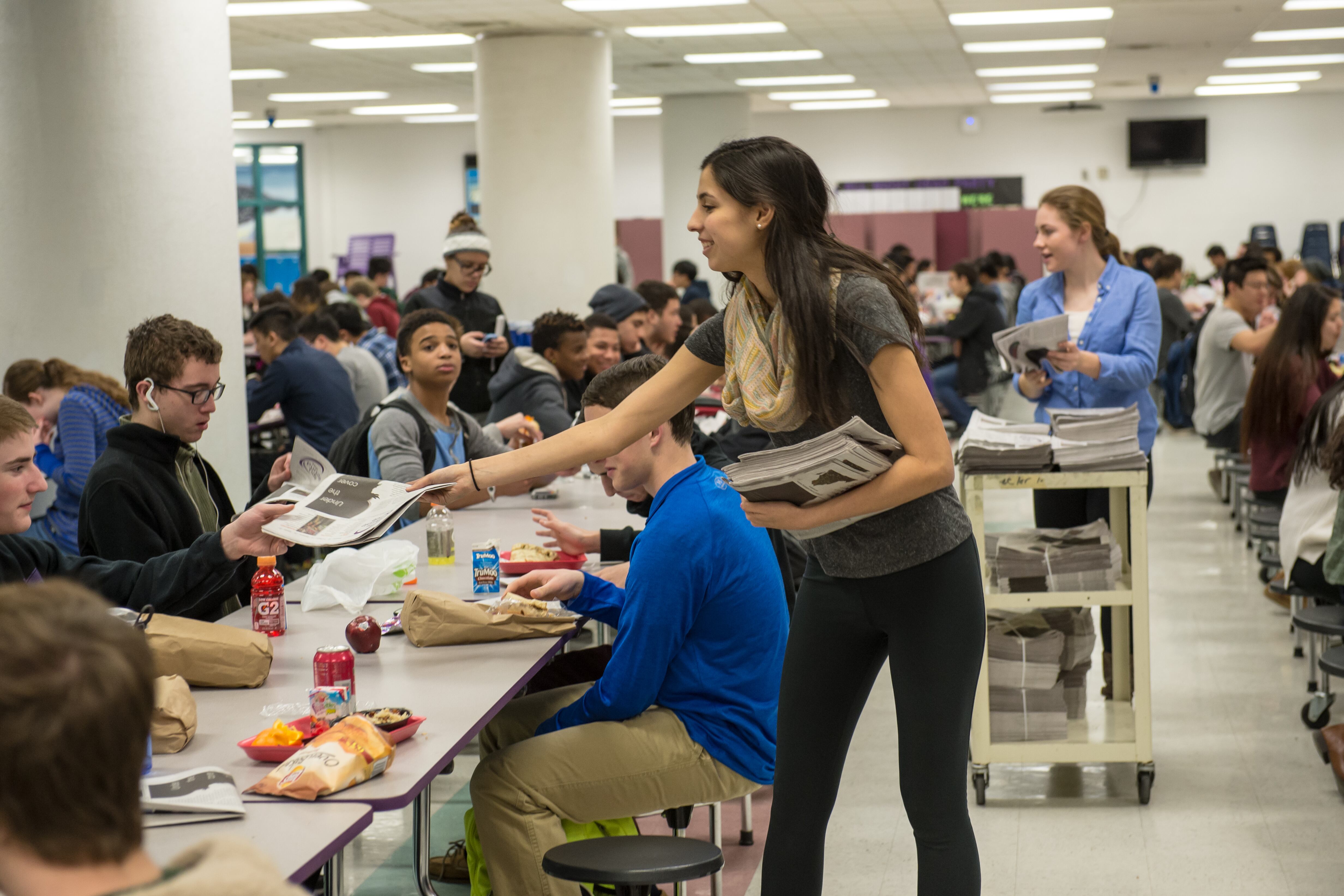Emely Ou Feng dreams of being an investigative journalist one day. But the 16-year-old hasn’t had many opportunities to pursue that goal at school for a simple reason: Her Brooklyn campus doesn’t have a student newspaper.
“Ever since I guess my freshman year I sort of knew that I want to be a journalist,” said Emely, a junior at John Dewey High School. “I should be supported by my school, you know, to pursue my passion.”
Instead, Emely has found outside programs and internships to hone her craft, though her school recently began offering a journalism elective and she jumped at the chance to enroll.
Emely is hardly alone. Roughly 73% of the city’s high schools don’t have student newspapers or websites, according to a new study conducted by Geanne Belton, a journalism professor and director of the high school journalism program at Baruch College, part of the City University of New York.

“I think it’s a huge loss for a school and for students when there is no newspaper,” Belton said, “especially now, with the importance of news literacy education.”
Student journalism advocates argue that newsgathering programs are essential, offering opportunities to develop writing skills, build community, hold school leaders accountable, and develop a more racially and socioeconomically representative pipeline of professional journalists. Some of the city’s high schools already boast strong newspapers that repeatedly break news, sending mainstream news outlets scrambling to match their reporting.
But it’s up to individual schools to operate and fund student news operations, and many schools face competing demands, ranging from helping students catch up academically to offering more STEM-related activities. Newspapers can be a heavy lift to run, especially when student interest varies or staff members supporting them leave.
Students have unequal access to newspapers
Between 2021 and 2022, Belton and a team of research assistants surveyed nearly every public high school about whether they have student news operations. Though historical data is limited, there is some evidence that student newspapers have dwindled over the last 15 years, though it’s not clear exactly how much. Belton’s team also found wide disparities in newspaper access across the city by race, geography, and poverty status.
High schools in Queens and Staten Island are much more likely to have newspapers than those in the Bronx or Brooklyn. More than three-quarters of the schools with the highest concentrations of white and Asian American students have newspapers, while just 8% of schools with high concentrations of Black students and 16% of those with larger shares of Latino students do, the report found.
All of the specialized schools, which are among the most selective high schools in the city, have student newspapers. (The study does not include charter schools and certain alternative programs including District 75, which enrolls students with more significant disabilities.)
Jose Santana, a junior at the Bronx’s Dr. Richard Izquierdo Health & Science Charter School, said he wishes the school had a news organization, in part to get the word out about extracurricular activities other than sports. During his freshman year, the school launched a radio club but he said it was mostly promoted over email and soon fizzled in part due to lack of interest.

A student news organization could help “students to speak up for things that are happening,” Jose said. “It would definitely be useful to promote clubs.” Jose has also pursued journalism opportunities off campus, working as an intern on a podcast called “Miseducation” that focuses on education inequality.
Outside groups work to fill gaps
There are growing efforts to boost the number of student news operations. As part of her survey, Belton asked high schools that don’t have student newspapers whether they’re interested in starting them. She launched a training program for educators who expressed interest, covering everything from the nuts and bolts of how to write a news story to what website platform to use. And thanks to outside funding, she has been able to start handing out $1,000 honorariums to teachers to help get them started.
“We’re really trying to jumpstart newspapers,” said Belton, adding that the goal is to launch 25 new student newspapers by the end of 2023. (Belton’s survey and training program were financially supported by the Google News Initiative and The Charles H. Revson Foundation. Chalkbeat also receives funding from Revson.)
Training is just the first step, though. “For some schools, if they’re running a newspaper club, they’re competing with a lot of different clubs and student time,” Belton said. “You have to get students interested when a lot of students don’t know what a school newspaper is.”
Bronx teacher David Fulco knows how painstaking the process is. After participating in Belton’s training earlier this year and, with support from his school’s leaders, he recruited about 17 juniors to launch a news organization. Armed with lots of practical advice from Belton, and having worked as a journalist earlier in his career, he figured they’d have no trouble publishing at least twenty stories by the end of the school year. They published closer to five.
“I’ve worked with newspapers before. I’ve worked in a newsroom. It was monumentally difficult,” said Fulco, who teaches English at The Laboratory School of Finance and Technology. “It’s a brand new type of writing they’re being asked to do. It requires revision, which they hate. It requires editing, which is so difficult.” Plus, he found he had to prepare detailed lessons, which took time to create.
Fulco is optimistic that the school newspaper will catch on and grow. “There’s a gratification of seeing your work, but it’s not as instantaneous as the gratification they’re able to get through their social media,” he said. “They see a newspaper as an agent of change, even more so than a student council.”

Denisse Merino, a senior at Manhattan’s Leadership and Public Service High School, has seen the impact of her own journalism. Her school launched a student news organization after participating in Belton’s training. Last month, Denisse penned a story criticizing the school’s administration for not scheduling field trips specifically geared toward the senior class, including excursions to museums or college visits.
The school’s administration initially “brushed off” the idea, according to the article. But after the story ran, Principal Philip Santos met with Denisse and two other students and agreed to monthly excursions — including a trip to the movies later this month.
Santos said the article reminded him that the senior class has seen much of their high school experience disrupted by the pandemic, which hit during their freshman year and limited opportunities for field trips. “The newspaper, and her article, and talking with her friends just got it done,” Santos said. “I’m very proud of her.”
For her part, Denisse “felt really excited and grateful” for the story’s impact. “We were able to be heard,” she wrote in a text.
Other efforts to expand access to student journalism are also beginning to bubble up. The Bell, an organization that offers training and support for student journalists, is spearheading a Youth Journalism Coalition composed of students, advocates, and professional news outlets (including Chalkbeat) to begin coming up with solutions.
“New York City is the media capital of the world, yet we have youth media deserts all over the city and it doesn’t have to be that way,” said Taylor McGraw, executive director of The Bell. “We are going to need investment from the big players in this ecosystem — the DOE, the CUNY system, and media outlets.”
Students have begun pressing schools Chancellor David Banks on whether he might support more aggressive efforts to expand student journalism, especially as he has emphasized career-oriented education options.
At a press conference with student reporters, a student from Staten Island’s Susan Wagner High School asked Banks whether the education department plans to increase access to student journalism opportunities, especially given the stark disparities with respect to which students have access to them.
Banks acknowledged that the issue hasn’t been “top of mind” but left the door open to changes.
“Anything that lifts student voice is important to me,” he said.
Alex Zimmerman is a reporter for Chalkbeat New York, covering NYC public schools. Contact Alex at azimmerman@chalkbeat.org.






